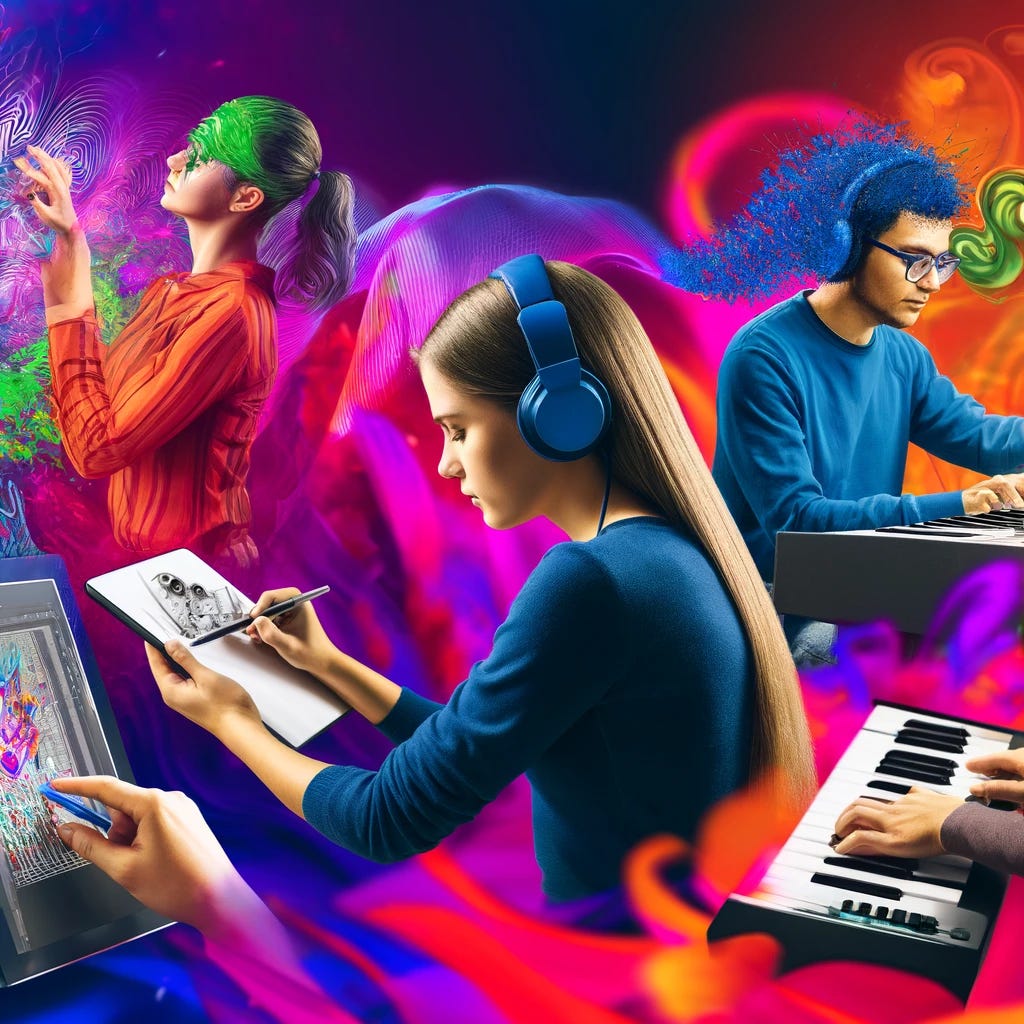The Role of Technology in Enhancing Creative Expression for Neurodivergent Individuals
In an era where technology infiltrates every aspect of life, its impact on creative expression, especially for neurodivergent individuals, is profound and transformative. This blog post delves into how various technological tools and software not only facilitate but also enhance the creative processes for individuals with neurodivergent conditions like ADHD and ASD. We will explore the specific tools in graphic design, digital music production, and writing that are particularly supportive and beneficial.
Empowering Creativity Through Graphic Design Software
For many neurodivergent individuals, particularly those on the autism spectrum, graphic design can be a powerful outlet for expression. The precision and control provided by graphic design software can match their strengths, such as attention to detail and deep focus.
1. Adobe Photoshop and Illustrator: These programs offer extensive tools and features that allow for meticulous control over design elements. The layering, coloring, and detailing capabilities are particularly useful for ASD individuals who thrive on the complexity and control these tools offer.
2. Sketch: Known for its minimalist interface, Sketch is particularly beneficial for individuals with ADHD who might be easily overwhelmed by too many controls and options. It offers a more focused environment to create without distraction.
3. Canva: For those who seek simplicity in design without the need for extensive training, Canva provides a user-friendly interface with ready-to-use templates. This can be particularly appealing for individuals who need quick results and may struggle with the initiation stages of a project.
Enhancing Musical Creativity with Digital Tools
Music production can provide a sensory and emotionally expressive experience for neurodivergent individuals, offering them a way to communicate feelings and ideas that might be difficult to express through words alone.
1. Ableton Live: With its intuitive workflow and flexible interface, Ableton Live is excellent for ADHD individuals who may benefit from immediate feedback and the ability to experiment quickly. Loop-based logic and real-time editing keep the creative process dynamic and engaging.
2. GarageBand: Apple’s GarageBand is a gateway for many budding musicians, including those with ASD, providing a straightforward, visually intuitive interface. Its range of virtual instruments and loops offers a hands-on experience that can be less intimidating than more complex software.
3. FL Studio: Known for its pattern-based music sequencing, FL Studio is ideal for ASD users who think in patterns and sequences. The software allows users to see their music visually and manipulate elements in a pattern grid, making the abstract more concrete.
Supporting Written Expression with Assistive Writing Technology
Writing can be a significant challenge for neurodivergent individuals, especially those with dyslexia or dysgraphia. However, modern technology offers tools that mitigate these challenges, helping users organize their thoughts and communicate more effectively.
1. Grammarly: This tool offers advanced grammar, punctuation, and style checking, which can be incredibly helpful for those with dyslexia. It also provides explanations for corrections, which can be a learning tool in itself.
2. Scrivener: Particularly useful for ADHD writers who may struggle with organizing long-form works, Scrivener allows for easy manipulation of text blocks and integrates well with mind-mapping software. This can help in managing large projects by breaking them down into manageable pieces.
3. Dragon NaturallySpeaking: For those who find typing cumbersome or have dysgraphia, speech-to-text technology like Dragon NaturallySpeaking can revolutionize the writing process. It allows users to speak naturally, and the software translates spoken words into text, facilitating a more fluid creative expression.
The Impact of Adaptive Learning Technologies
Beyond specific creative fields, adaptive learning technologies in general play a crucial role in supporting neurodivergent individuals by tailoring learning experiences to their unique needs. These technologies assess the user’s abilities and adapt in real-time, providing personalized pathways through content, which can help in mastering new tools and techniques at a comfortable pace.
Conclusion
Technology opens a world of possibilities for neurodivergent individuals, providing them with the means to express their unique perspectives and talents. Whether through the visual medium of graphic design, the rhythmic patterns of music, or the structured flow of writing, these tools not only accommodate their needs but also elevate their creative expressions. As we continue to innovate and develop new tools, the potential for these individuals to engage with and contribute to the world in meaningful ways is limitless.

